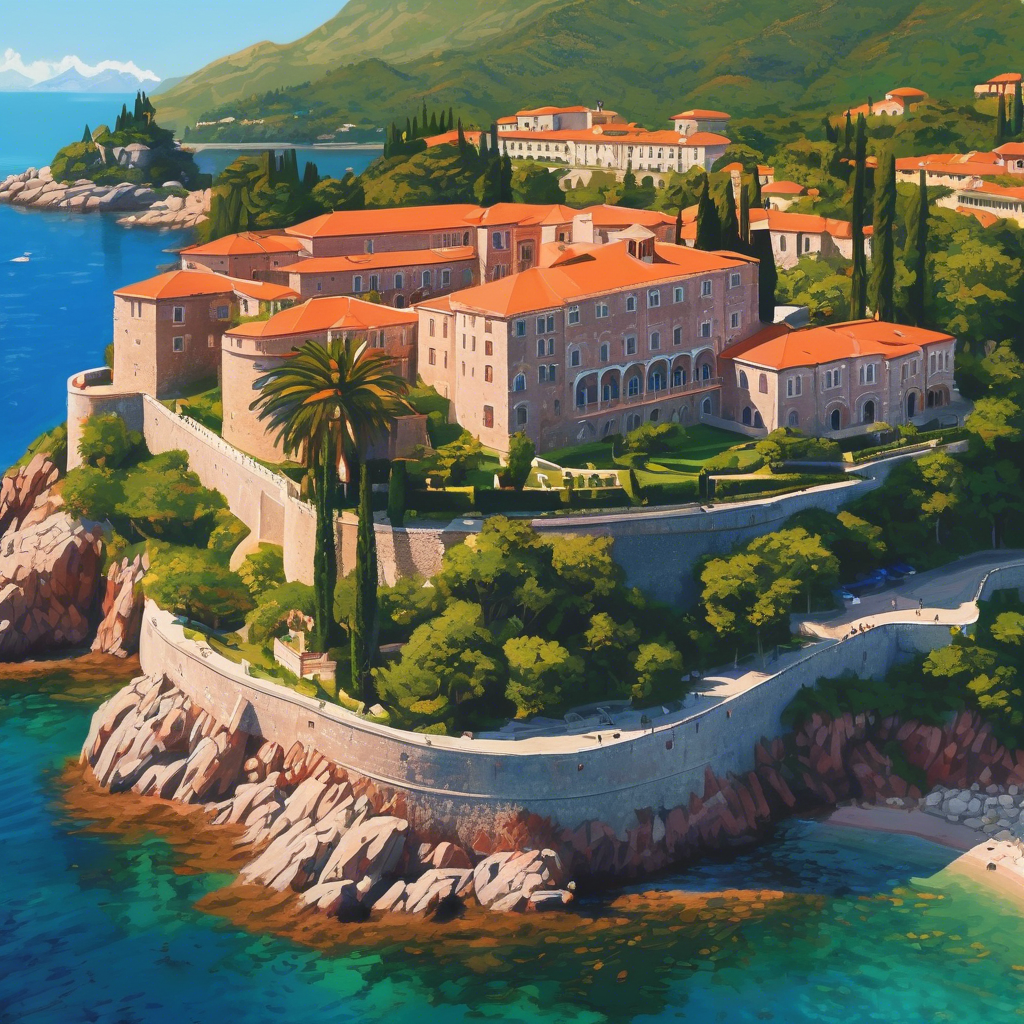
After years of anticipation shadowed by legal battles and uncertainty, the iconic Sveti Stefan city-hotel in Montenegro may finally be on the brink of reopening its doors to guests. This news comes amid unofficial reports that suggest an imminent comprehensive agreement between the Government of Montenegro and the tenant company, Adriatic Properties. The proposed deal would facilitate a temporary reopening of the historic hotel complex while simultaneously pausing the ongoing arbitration proceedings in London for six months. This development promises to breathe new life into a venue that has been silent since 2021, stirring excitement among locals and international travelers alike.
The Sveti Stefan city-hotel is more than just a luxurious getaway—it is a landmark steeped in history and renowned for its striking beauty. Nestled on a small island connected to the mainland by a narrow isthmus, the hotel is a fusion of medieval architecture and modern luxury, setting it apart on the Adriatic coast. Its tumultuous closure two years ago was the result of a complex dispute between the Montenegrin government and Adriatic Properties, which manages the property. Legal disagreements centered around allegations of contract breaches and concerns about protecting the privacy of the hotel’s elite clientele. Privacy, a critical aspect for the esteemed visitors who have frequented Sveti Stefan—from Hollywood stars to European aristocracy—became a sticking point that ultimately forced the complex to close its operation.
The anticipated agreement reportedly includes the reopening of select areas, notably Queen’s Beach, an illustrious stretch of coastline famed for its breathtaking views and cultural significance. This beach is not only a natural jewel but also a nostalgic spot cherished by both locals and tourists. Its reopening would signal a pivotal moment, allowing public access to an area that has long been semi-exclusive due to hotel operations. Furthermore, the hotel itself is slated to welcome guests once again, offering the distinctive hospitality and historic charm that have been hallmarks of the Sveti Stefan experience. The plan aims to carefully balance the interests of the public and the exclusivity required to maintain the hotel’s luxurious reputation, which is no small feat.
Crucially, as part of these efforts, the parties involved have sought to suspend the ongoing arbitration case currently being settled in London. The arbitration, which has been a focal point throughout this saga, has already seen partial rulings that favor Adriatic Properties, including a directive for the Montenegrin government to cover legal fees exceeding €620,000. This highlights the intricate and sometimes contentious nature of the disputes surrounding the hotel. The suspension of arbitration for six months is strategic, aiming to allow the hotel to operate during the peak summer tourist season without the distractions of legal proceedings. This pause grants both sides a much-needed window to focus on practical, operational matters and, hopefully, to work toward a more permanent resolution.
The implications of Sveti Stefan’s reopening extend far beyond the hotel’s walls. Montenegro, a nation whose economy is heavily reliant on tourism, has felt the impact of the closure keenly. The hotel not only drew affluent visitors but also boosted the local economy through employment, supplier networks, and related tourism activities. Its reopening is widely seen as a crucial step in revitalizing Montenegro’s tourism sector, which competes with other Mediterranean destinations for attention. Locals, tourism operators, and officials alike are optimistic, believing that bringing Sveti Stefan back into full operation will restore a significant pull factor for the region. Moreover, the prospect of reintroducing visitors to the unique blend of history, culture, and natural beauty embodied by the city-hotel promises to cement Montenegro’s status on the global luxury travel map once again.
The story of Sveti Stefan is a tale of resilience wrapped in layers of history. The islet’s origins date back to the 15th century when it was fortified to protect against Ottoman invasions, later evolving into a small fishing village before its transformation into a luxury resort in the mid-20th century. Notable guests have included royalty, movie stars like Sophia Loren and Elizabeth Taylor, and prominent public figures worldwide. Interestingly, the hotel’s unique design preserves the essence of the village with narrow cobbled streets and red-tiled roofs, making it an immersive cultural experience rather than just a place to stay. The reopening signals not just a return to normalcy, but a revival of a cultural icon that intertwines Montenegro’s past and present.
As negotiations finalize, the precise terms and scope of the reopening remain closely guarded, with full details expected to be released soon. Tourism professionals are already preparing for an influx of bookings, hopeful that the summer will usher in an enthusiastic wave of international visitors eager to experience the renowned hospitality and unparalleled beauty of Sveti Stefan. Should the deal hold, it will mark a watershed moment—one that restores a marquee destination to Montenegro’s coastline and strengthens the nation’s tourism heartbeat, providing a platform for further growth in the years to come.
In essence, the tentative resurgence of the Sveti Stefan city-hotel represents a beacon of hope and opportunity. After years mired in disputes and closed doors, this Adriatic jewel stands poised to reclaim its position as a premier destination, catalyzing economic revitalization and reaffirming Montenegro’s allure on the world stage. For travelers, it promises a rare chance to step back into a narrative woven from centuries of culture, elegance, and breathtaking natural scenery—a story that is ready to welcome new chapters and a new generation of guests.
#SvetiStefanReopening #MontenegroTourism #AdriaticCoast #LuxuryTravel #HistoricHotels #QueenBeach #TravelNews
Leave a Reply